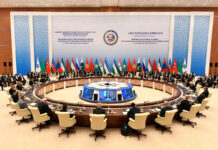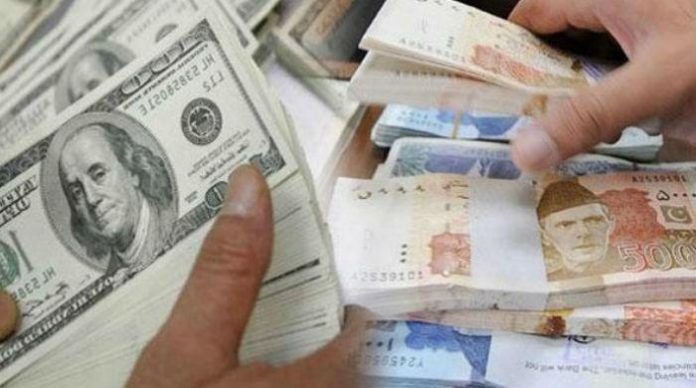KARACHI: The US dollar attained a sense of normalcy after rising more than three rupees in the inter-bank market earlier on Friday.
The US dollar ended the day trading at Rs107 compared to a high of Rs 108.50 in the inter-bank market on Friday morning. On Thursday, it had closed on the inter-bank market at Rs 105.50.
This mimics rupee’s sharp fall on July 5th both in the interbank and kerb market when it reached a then 2.5 year high of Rs108.
The dollar was trading at Rs108.0 in the open market opposed to Rs109.50 earlier in the day. On Thursday, dollar was trading at Rs107.50 in the kerb market.
A press release issued by central bank on day close read “SBP is of the view that this market-driven adjustment in the exchange rate will contain the imbalance in the external account and sustain higher growth trajectory. The exchange rate will continue to reflect the demand and supply conditions; and SBP stands ready to intervene, in case speculative and/or momentary pressures emerge, for smooth functioning of the foreign exchange markets.”
The current rupee depreciation is being attributed to pressure of payments on the external front which is fueling appreciation of the dollar.
The sudden appreciation of the dollar against the rupee created panic in the kerb market. President of Forex Association of Pakistan (FAP) Malik Bostan warned value of dollar could rise exorbitantly unless the central bank devised a specific policy.
In a comment to Bloomberg, Shamoon Tariq, the Stockholm-based vice chief investment officer at Tundra Fonder AB, said “The government should let the currency be driven by market dynamics and it seems to be a beginning. This sends a good vibe to investors.”
Spike in the dollar rate caught the market by surprise, especially since the SBP announced on Thursday that it had received $2.5 billion earned from the recent issuance of euro and Sukuk bonds.
Last week, Pakistan raised $1 billion in a five-year Sukuk and $1.5 billion in ten-year Eurobond transactions.
Normally when supply increases, like it did yesterday, the market stabilizes as the balance of payments increases.
This follows on the heels of a United Nations report Thursday which warned Pakistan’s policy of keeping the rupee stable could become untenable if the US dollar appreciates against other world currencies and possibly erode the country’s foreign exchange reserves.
Speculations have been rife since months that rupee devaluation was imminent. A recent World Bank analysis in November revealed that a weaker Pakistani rupee would help external balances with limited economic costs.
WB analysis outlined that there was a significant co-relation between the Real Effective Exchange Rate (REER) and exports in the medium to long-term. A flexible Pakistani rupee would allow narrowing the current trade deficit.
A weaker currency is not the prime choice for policymakers due to its short-term effect on consumption and the rise in inflation, however analysis carried out by World Bank, State Bank of Pakistan and other institutions suggested that a moderate increase in inflation and a manageable increase in debt financing are over-shadowed by the overall impact of the moderate depreciation on growth, which will likely to be positive.
Profit recently reported that State Bank of Pakistan Deputy Governor Jameel Ahmad, in an interview with Bloomberg, stated widening of trade and current account deficit weren’t something to be worried about as Pakistan’s exports are rising and imports are being constrained.
























